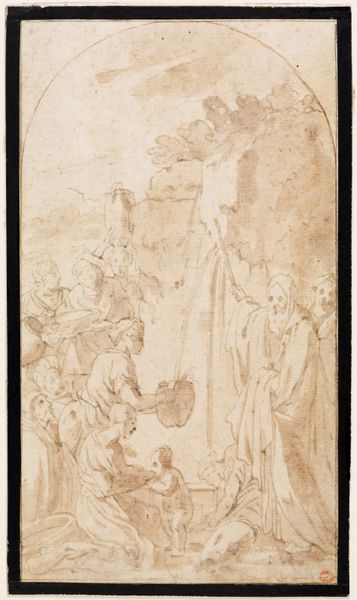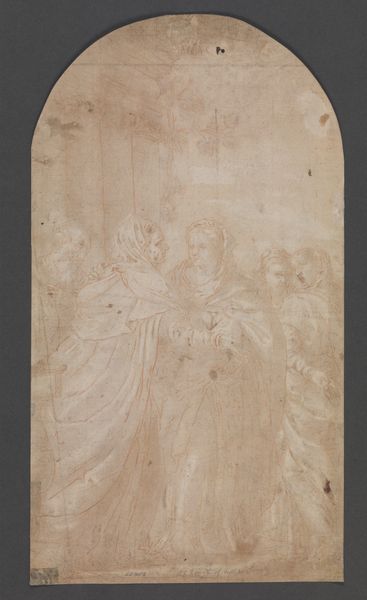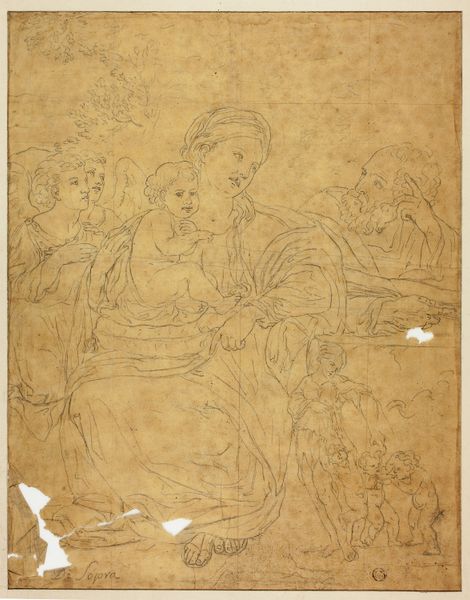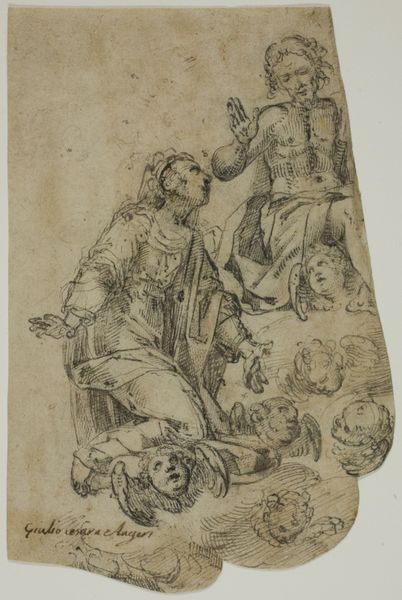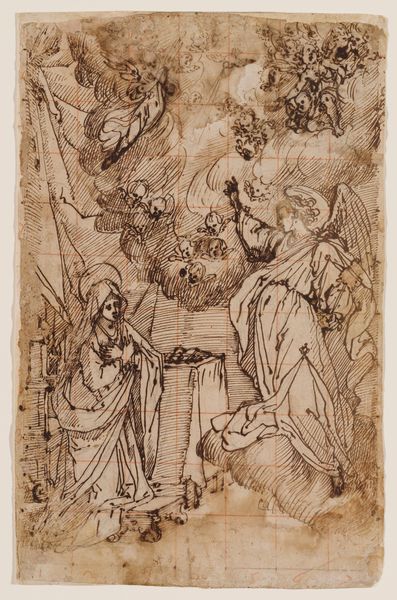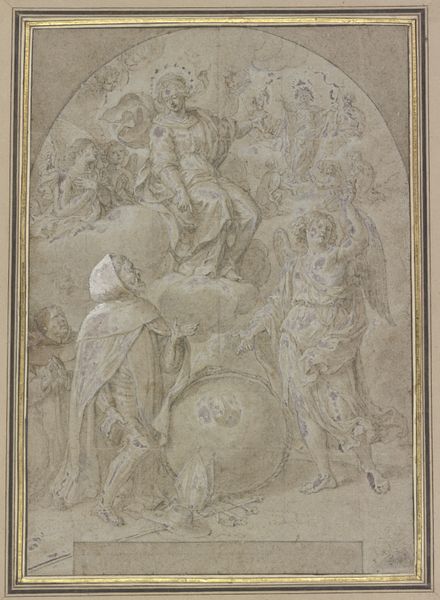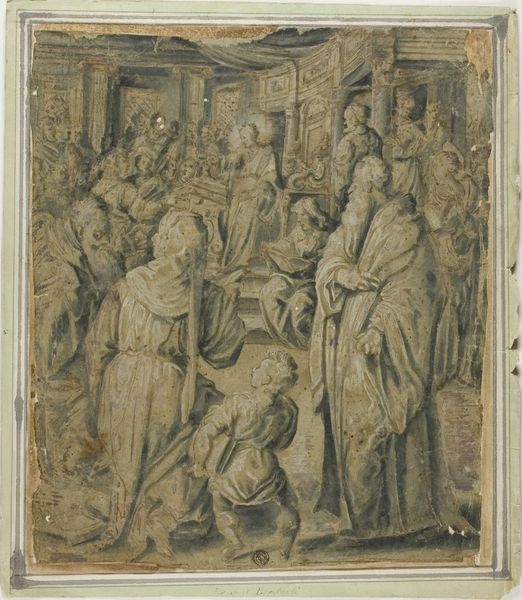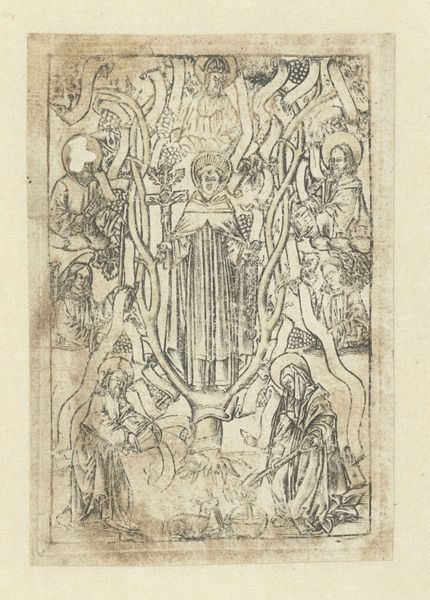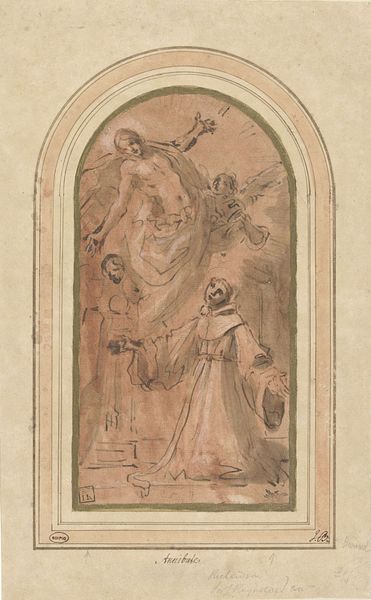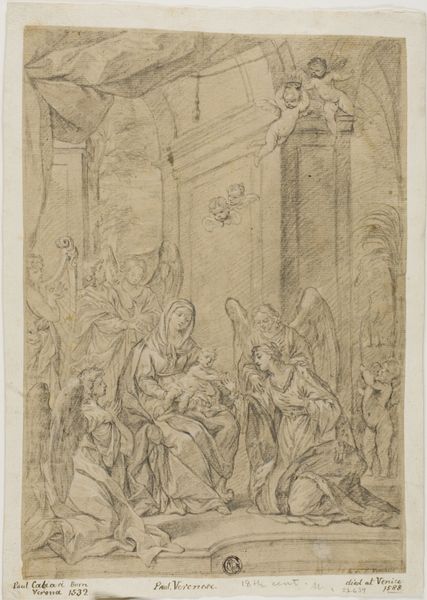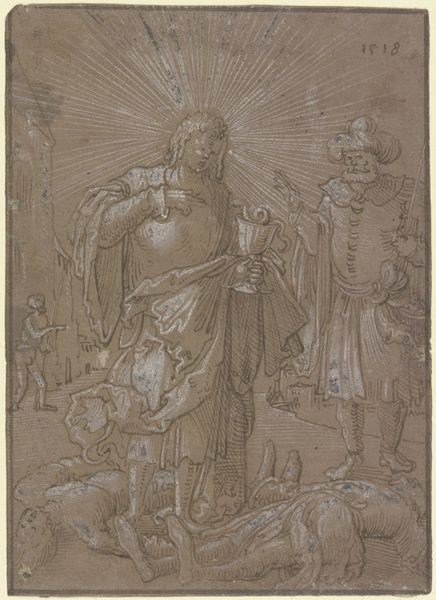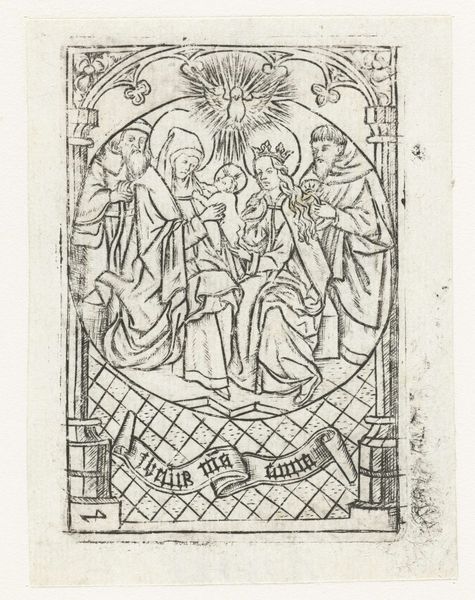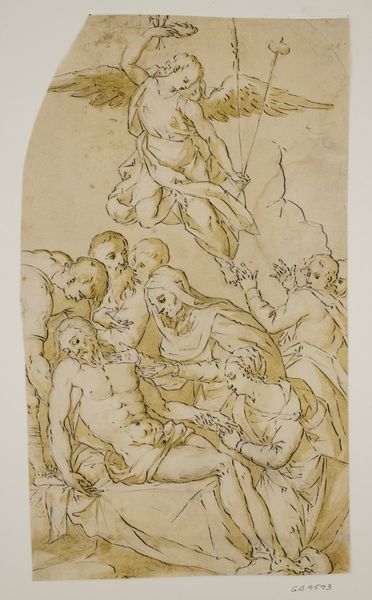
The Madonna and Child with a Female Martyr Saint, a Bishop Saint, and a Female Donor 1400 - 1450
0:00
0:00
drawing, paper, ink
#
portrait
#
drawing
#
medieval
#
narrative-art
#
charcoal drawing
#
figuration
#
paper
#
ink
#
italian-renaissance
Dimensions: 9 7/16 x 7 1/2 in. (23.9 x 19.1 cm)
Copyright: Public Domain
Curator: Today we're looking at a work by Stefano da Verona, or Stefano di Giovanni d'Arbosio di Francia if you want to use his full name. This piece, dating from 1400 to 1450, is entitled "The Madonna and Child with a Female Martyr Saint, a Bishop Saint, and a Female Donor." It's currently held at the Metropolitan Museum of Art. Editor: Well, first impression: it feels unfinished, almost dreamlike. The lines are so delicate, like a whispered prayer sketched on parchment. There's a vulnerability that comes from seeing the process so laid bare. Curator: The sketch-like quality is achieved through the use of ink and charcoal on paper. It gives the figures a sense of ethereality, but also points to larger discussions around patronage, female devotion, and saintly intervention prevalent in the early Italian Renaissance. We see a female donor, likely commissioning the piece, kneeling before the Madonna, accompanied by other saintly figures. Editor: It makes me think about the artist's hand. You can almost feel the movement, the pauses, the revisions. Was it a study for something grander, or a cherished work in its own right? Curator: The purpose is uncertain, but these kinds of drawings were often preparatory studies for larger paintings or frescoes. And, I think the deliberate inclusion, or should I say positioning, of a female donor reflects shifting roles within religious patronage at the time. It underscores the agency wealthy women began to exert. Editor: Absolutely. And it isn't lost on me how everyone, save the baby, seems so somber. Even the Madonna's gaze feels weighted, which reads as a subtle critique maybe or somber contemplation. What are your thoughts? Curator: I'd say that solemnity underscores the gravity of faith, a key theme within the narrative and of its era. There’s almost an expectation that as the mother of Christ, her expression would communicate grief in anticipation of Christ's death. I’m wondering too about the saints alongside the figures, maybe they signify familial connection and devotion or are they also symbols of class, gender or perhaps penance? Editor: Beautiful. A somber beauty indeed. I can feel my heart opening ever so slightly just listening to this one, too. Curator: And, to think, a simple drawing on paper unlocks a whole world of artistic intention and historical complexity! Editor: Exactly! You really have a sense of these different figures who once touched, considered, and brought to life, and thought so carefully of its making.
Comments
No comments
Be the first to comment and join the conversation on the ultimate creative platform.
